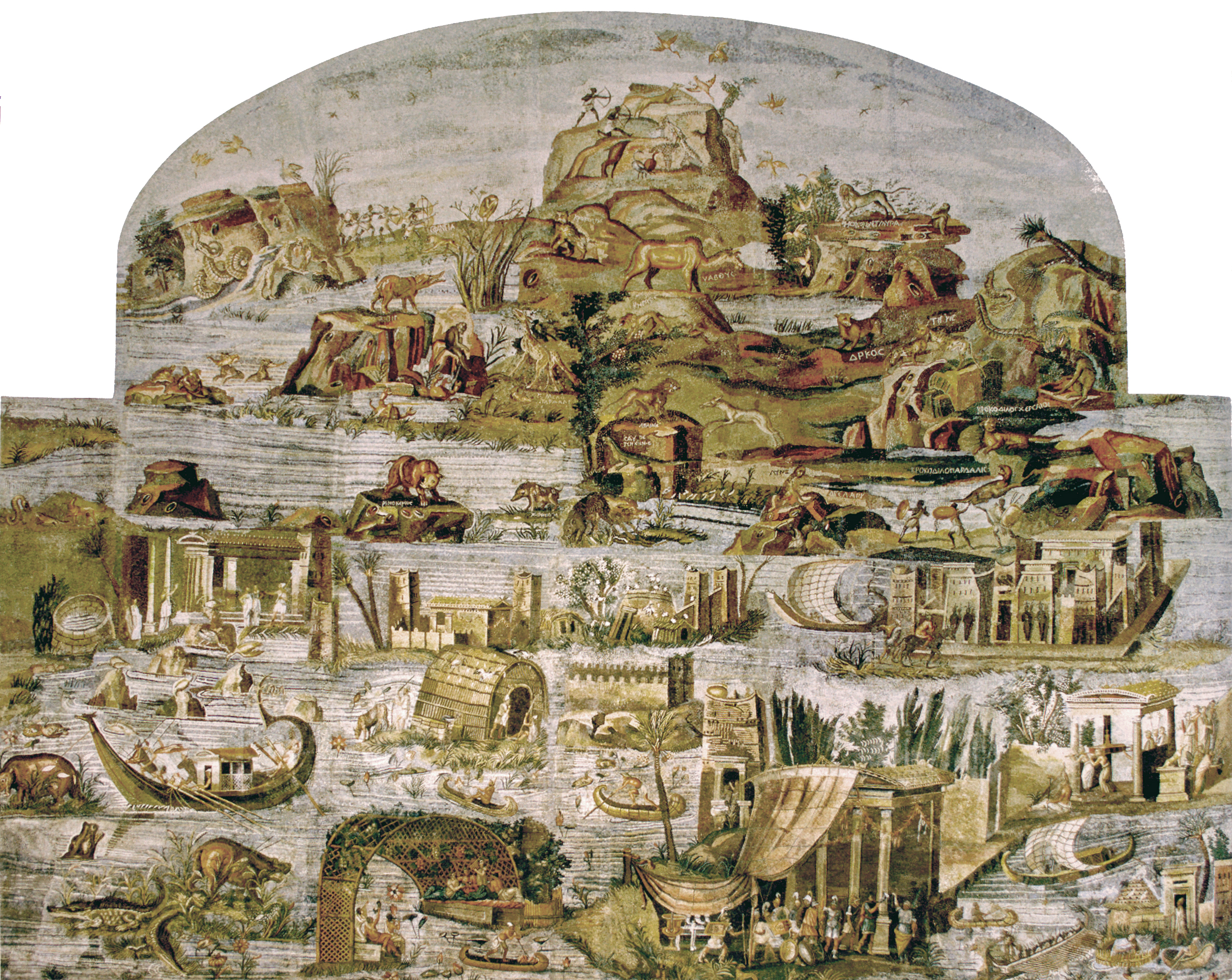Opus vermiculatum on:
[Wikipedia]
[Google]
[Amazon]
 ''Opus vermiculatum'' is a method of laying
''Opus vermiculatum'' is a method of laying
 ''Opus vermiculatum'' originated in
''Opus vermiculatum'' originated in
 ''Opus vermiculatum'' is a method of laying
''Opus vermiculatum'' is a method of laying mosaic
A mosaic is a pattern or image made of small regular or irregular pieces of colored stone, glass or ceramic, held in place by plaster/mortar, and covering a surface. Mosaics are often used as floor and wall decoration, and were particularly pop ...
tesserae
A tessera (plural: tesserae, diminutive ''tessella'') is an individual tile, usually formed in the shape of a square, used in creating a mosaic. It is also known as an abaciscus or abaculus.
Historical tesserae
The oldest known tesserae ...
to emphasise an outline around a subject. This can be of one or more rows and may also provide background contrast, e.g. as a shadow, sometimes with ''opus tessellatum
''Opus tessellatum'' is the Latin name for the normal technique of Greek and Roman mosaic, made from tesserae that are larger than about 4 mm. It is distinguished from the finer ''opus vermiculatum'' which used tiny ''tesserae'', typically cubes ...
''. The outline created is often light and offset by a dark background for greater contrast. The name ''opus vermiculatum'' literally means "worm-like work", and has been described as one of the most demanding and elaborate forms of mosaic work. Usually ''opus vermiculatum'' is meant to put emphasis on the main design and foreground details of a work, using a smooth and flowing halo-effect. Sometimes it was used only around the head of a figure. The tesserae used were often square but can be variously shaped.Strong, Donald (June 1, 1992). ''Roman Art: The Yale University Press Pelican History of Art''. Yale University Press. . p. 56
History
 ''Opus vermiculatum'' originated in
''Opus vermiculatum'' originated in Greece
Greece,, or , romanized: ', officially the Hellenic Republic, is a country in Southeast Europe. It is situated on the southern tip of the Balkans, and is located at the crossroads of Europe, Asia, and Africa. Greece shares land borders with ...
, later than other mosaic methods. The earliest known example is the Sophilos Mosaic of Thmuis, which has been dated to around 200 BC. The method spread throughout the Hellenistic world; for instance, the large corpus of surviving examples found on the island of Delos
The island of Delos (; el, Δήλος ; Attic: , Doric: ), near Mykonos, near the centre of the Cyclades archipelago, is one of the most important mythological, historical, and archaeological sites in Greece. The excavations in the island are ...
. In Egypt
Egypt ( ar, مصر , ), officially the Arab Republic of Egypt, is a transcontinental country spanning the northeast corner of Africa and southwest corner of Asia via a land bridge formed by the Sinai Peninsula. It is bordered by the Medite ...
it was used for tomb decoration from the late-3rd to 1st centuries BC, and in Syria
Syria ( ar, سُورِيَا or سُورِيَة, translit=Sūriyā), officially the Syrian Arab Republic ( ar, الجمهورية العربية السورية, al-Jumhūrīyah al-ʻArabīyah as-Sūrīyah), is a Western Asian country loc ...
, it survived into later times. The Nile mosaic of Palestrina 300px, The Nile Mosaic of Palestrina.
The Palestrina Mosaic or Nile mosaic of Palestrina is a late Hellenistic floor mosaic depicting the Nile in its passage from the Blue Nile to the Mediterranean. The mosaic was part of a Classical sanctuary-gro ...
has a very refined use of color and shows an advanced development. This may indicate that the technique was based on paintings.
In the 1st century BC, it reached Italy along with other mosaic methods. Many fine examples of this style have been found at Pompeii
Pompeii (, ) was an ancient city located in what is now the ''comune'' of Pompei near Naples in the Campania region of Italy. Pompeii, along with Herculaneum and many villas in the surrounding area (e.g. at Boscoreale, Stabiae), was buried ...
. One remarkable work in particular portrays a crucial scene in the Battle of Issus
The Battle of Issus (also Issos) occurred in southern Anatolia, on November 5, 333 BC between the Hellenic League led by Alexander the Great and the Achaemenid Empire, led by Darius III. It was the second great battle of Alexander's conquest of ...
, and was possibly copied from a 4th-century BC Greek painting or fresco. The use of ''opus vermiculatum'' declined after the 1st century AD, but continued to be employed for finer Roman mosaics until the 4th century. By then, mosaics were becoming increasingly impressionistic, taking advantage of the crystalline reflection of the tesserae, which was better suited to ''opus tessellatum''. It was eventually entirely abandoned for this style."opus vermiculatum." Encyclopædia Britannica. 2006.
See also
* VermiculationNotes
{{reflist Mosaic Italian mosaic Roman mosaics